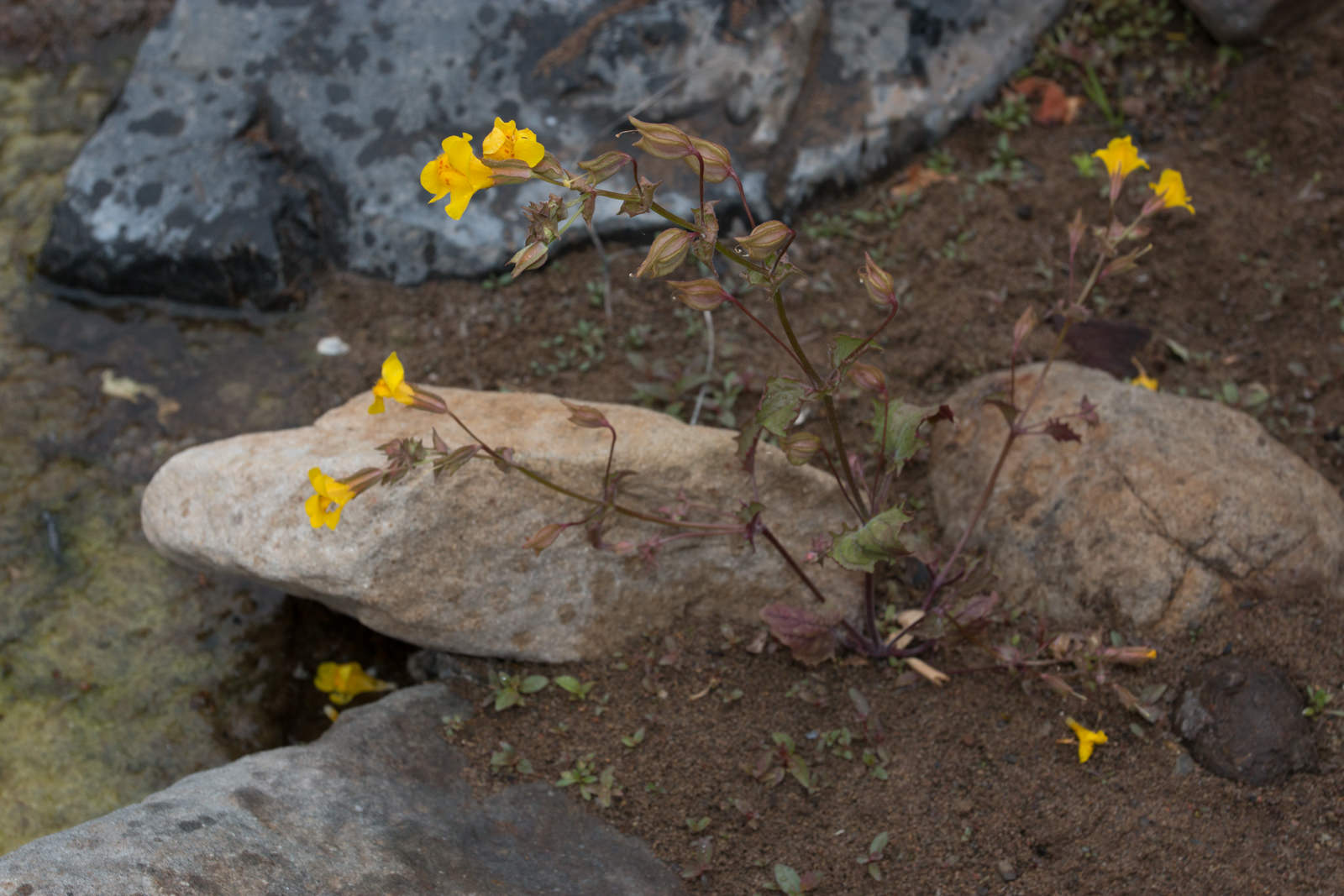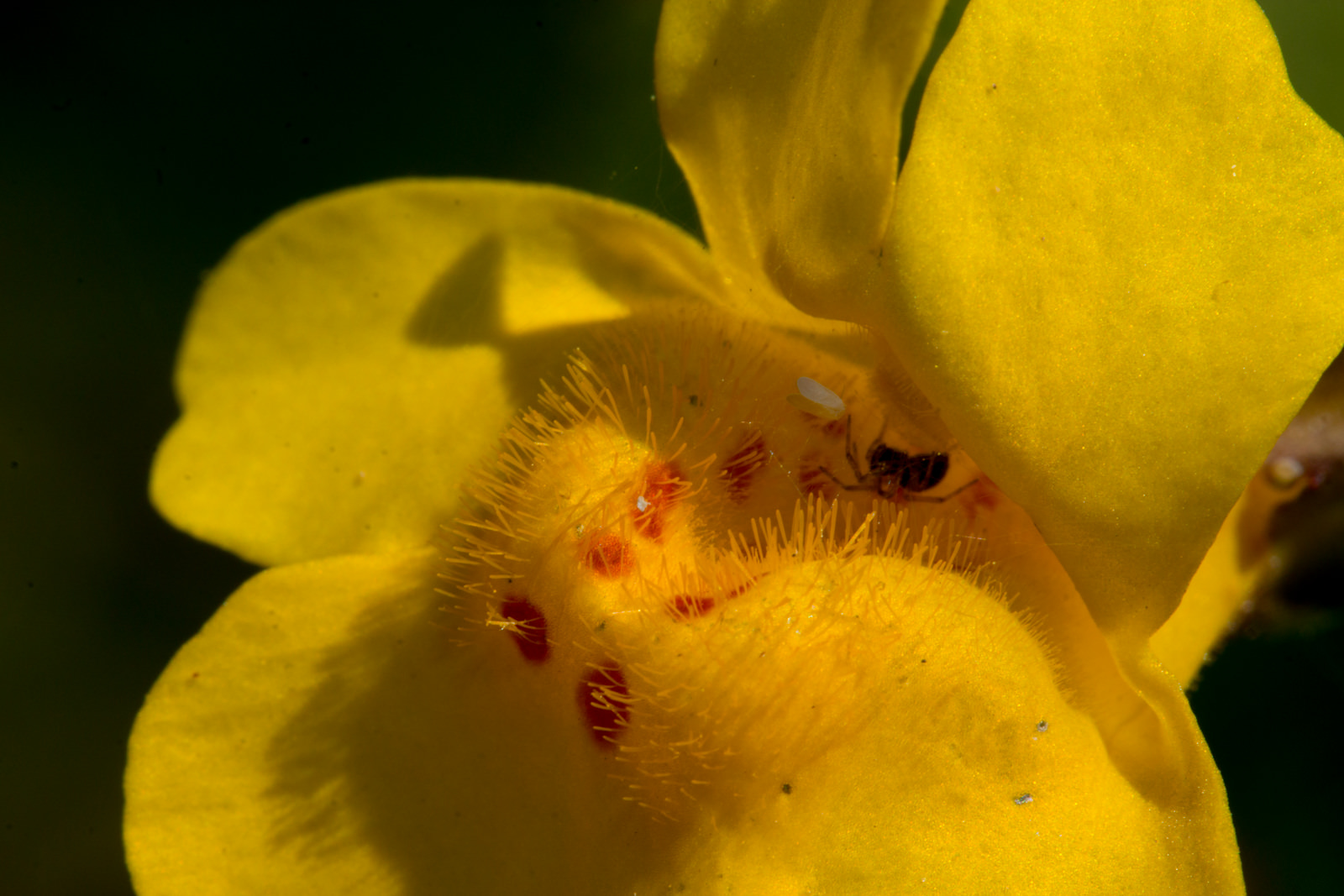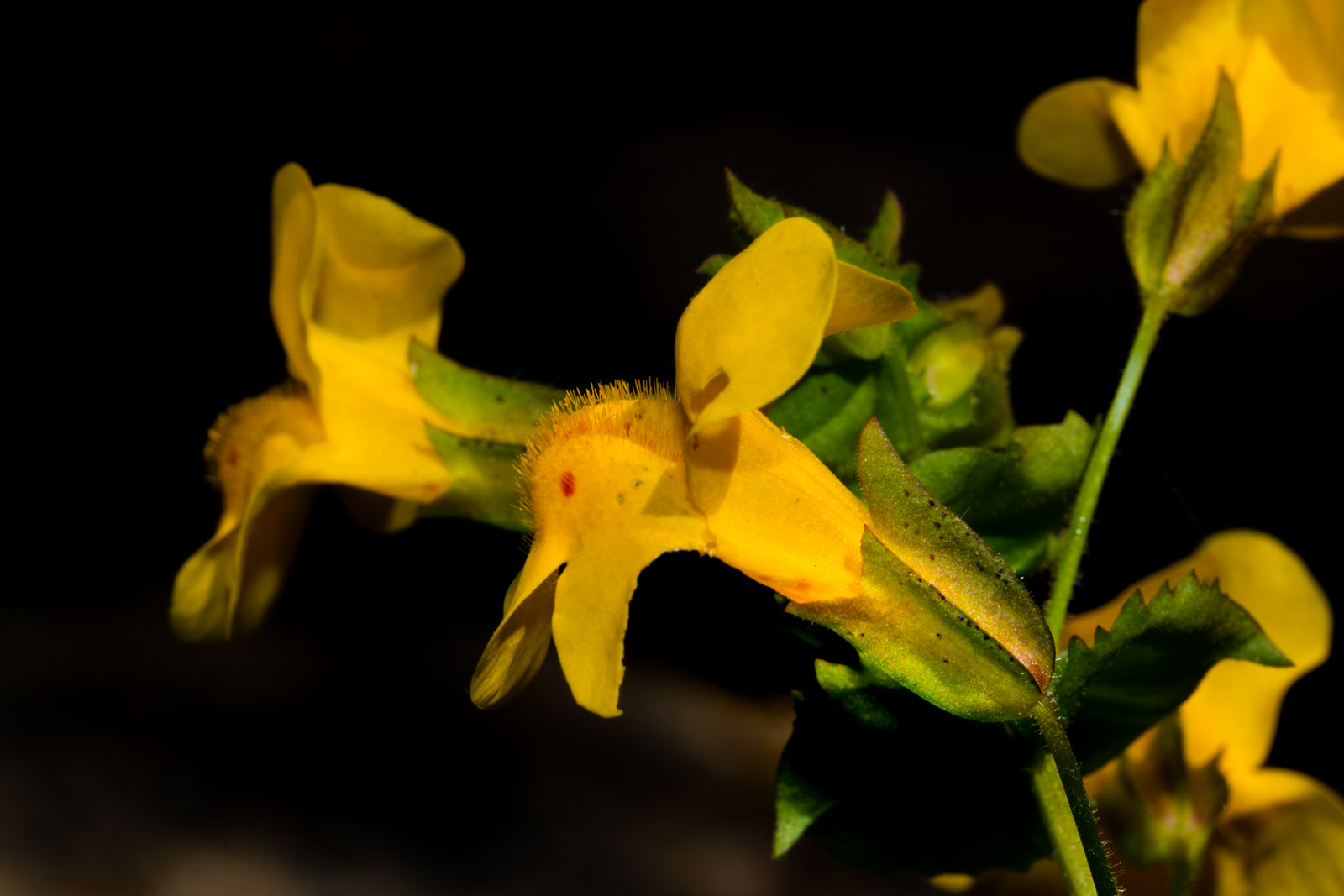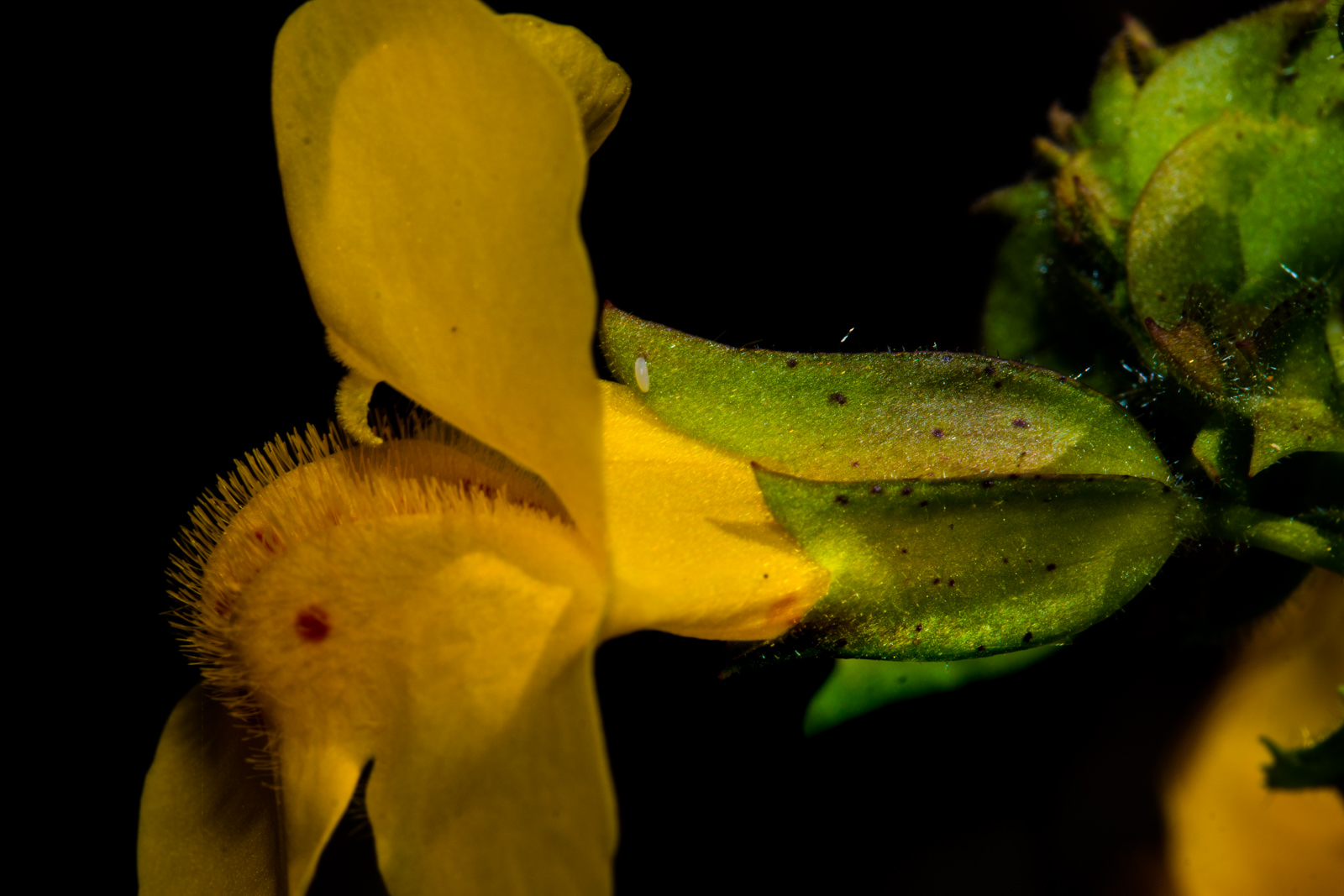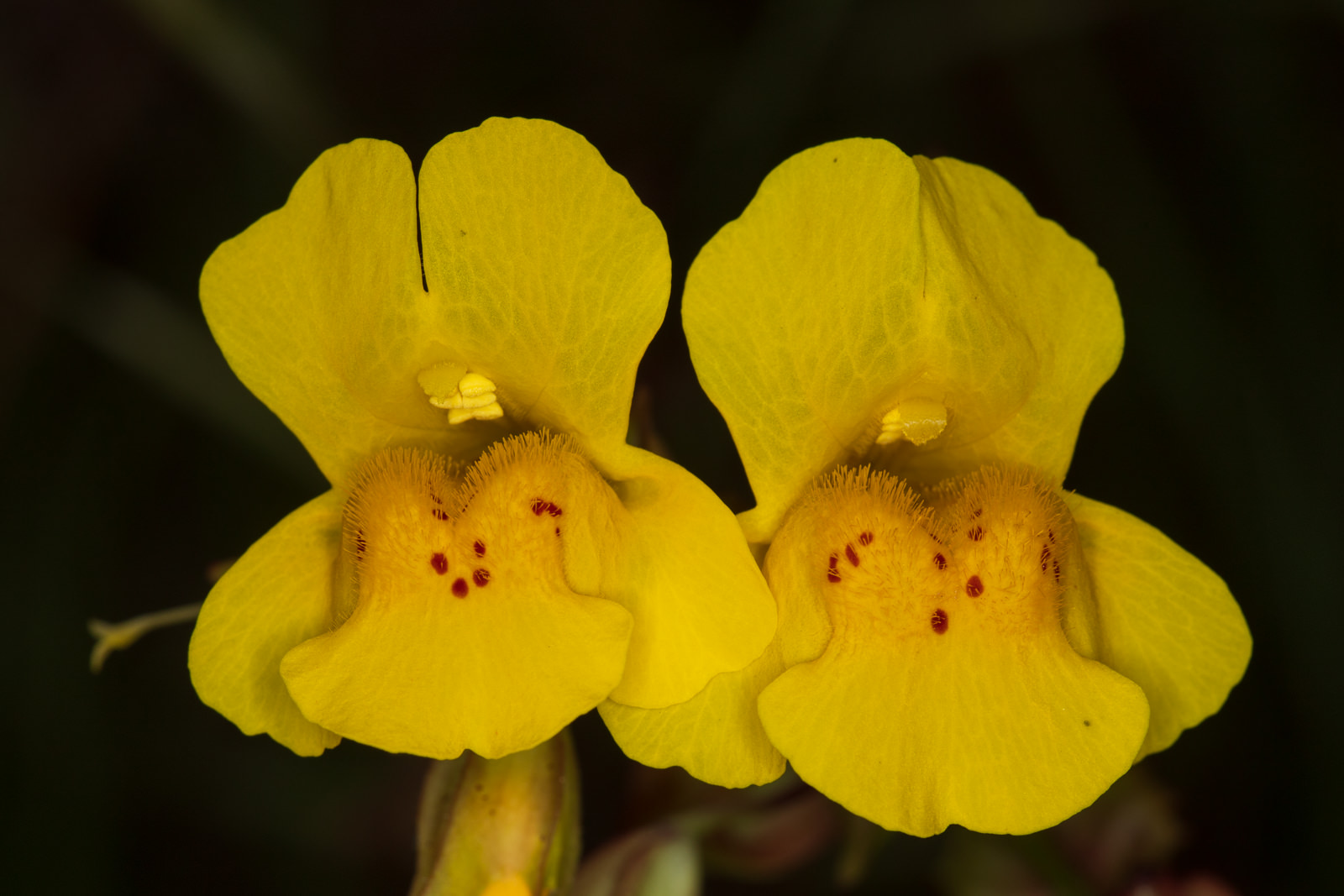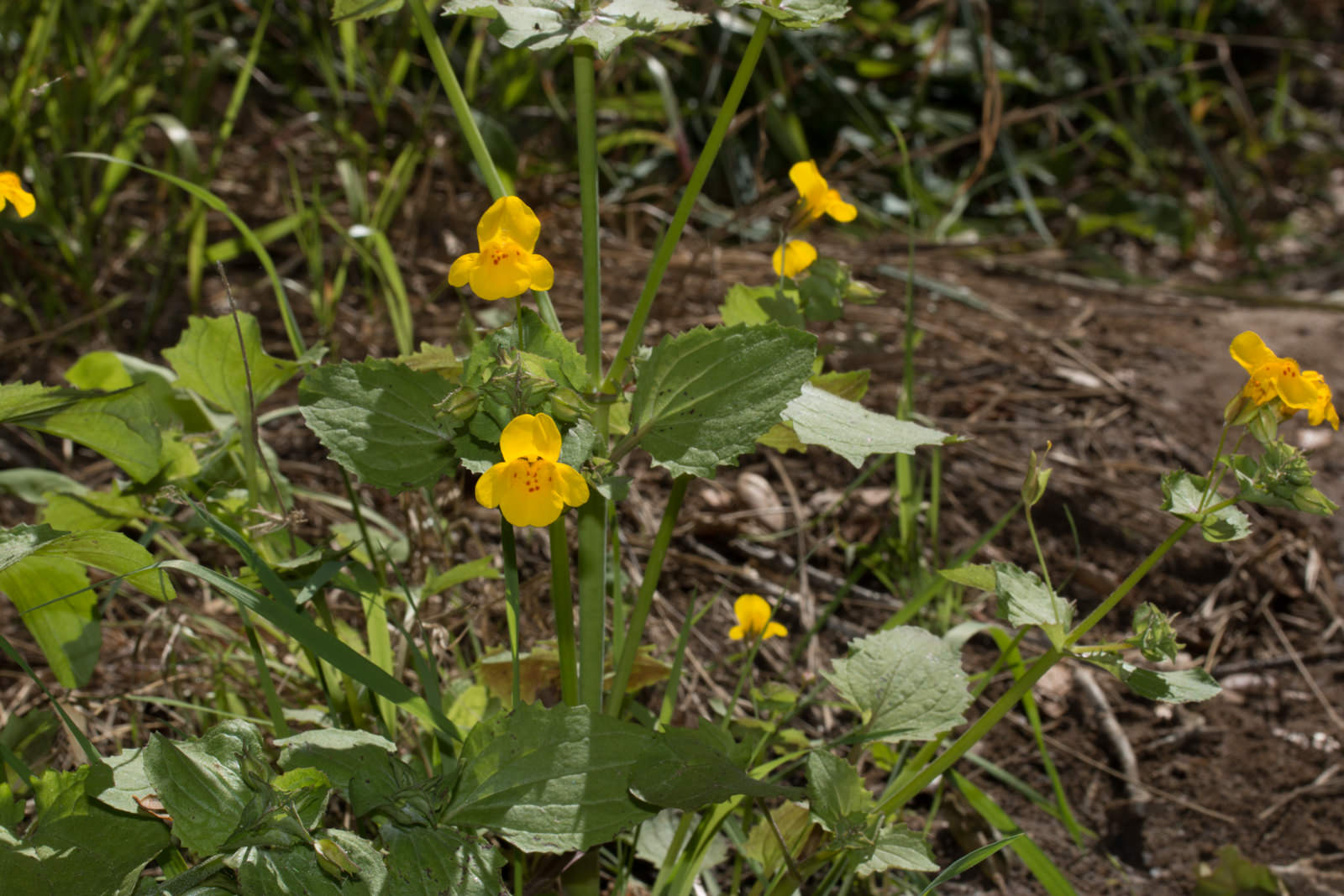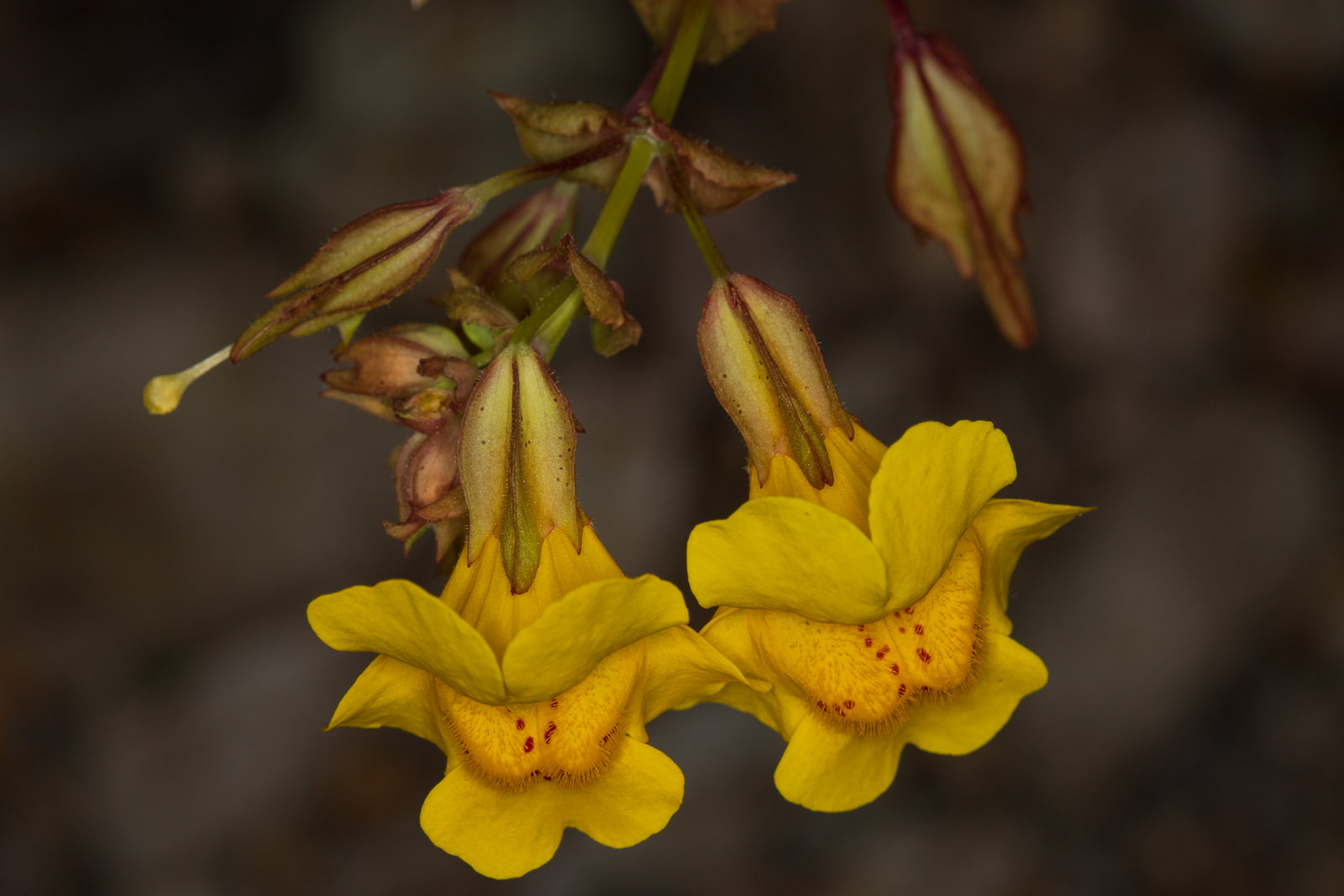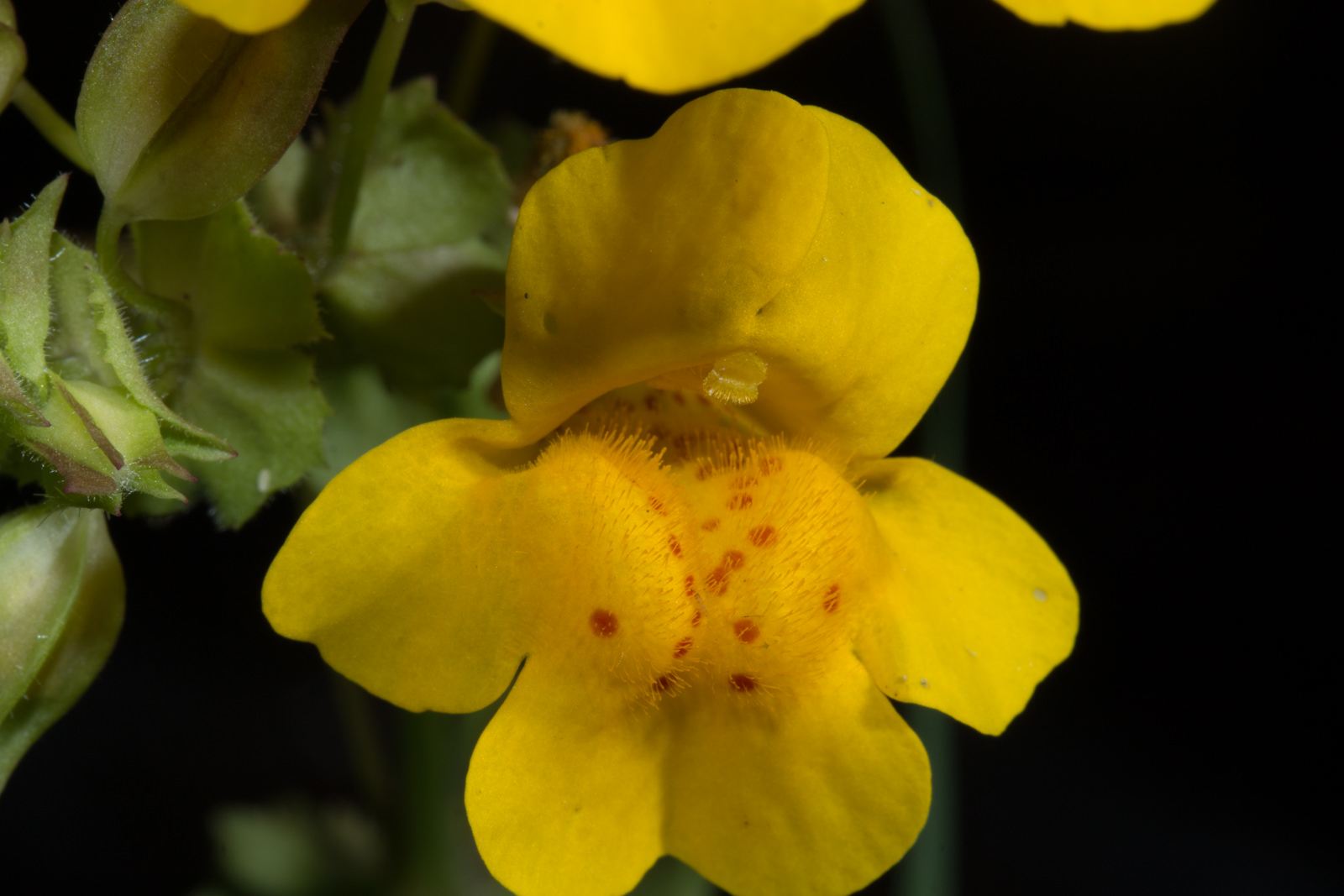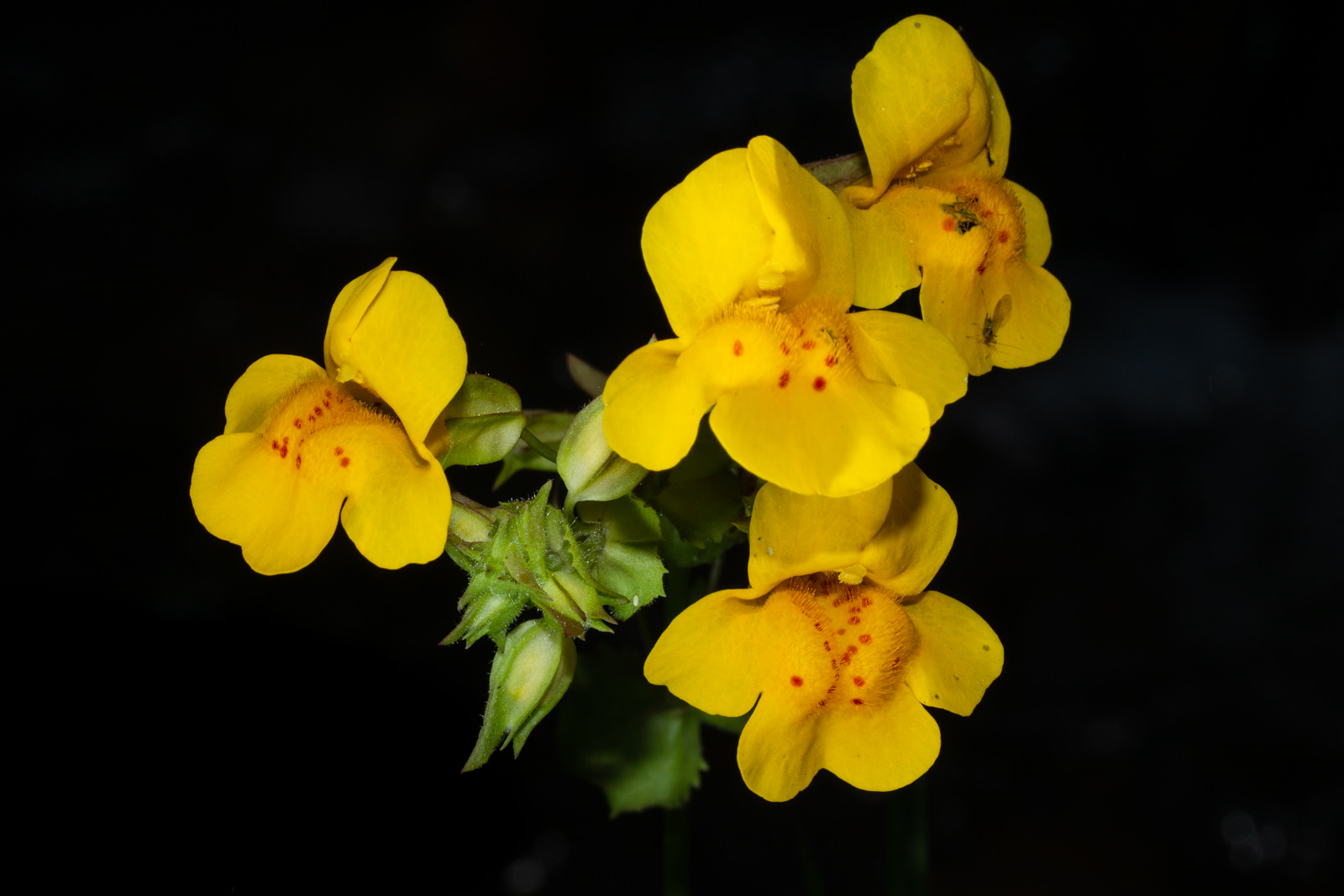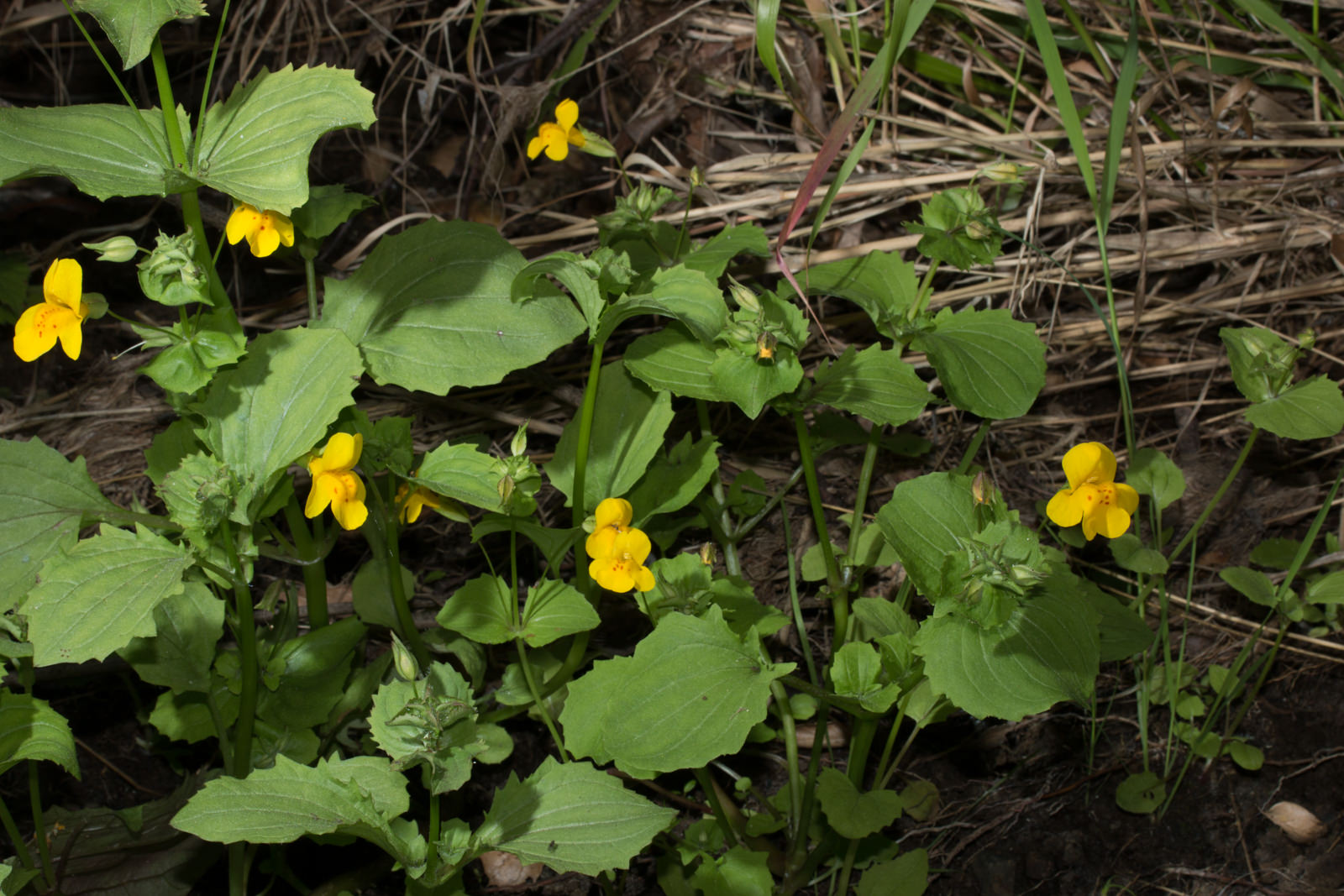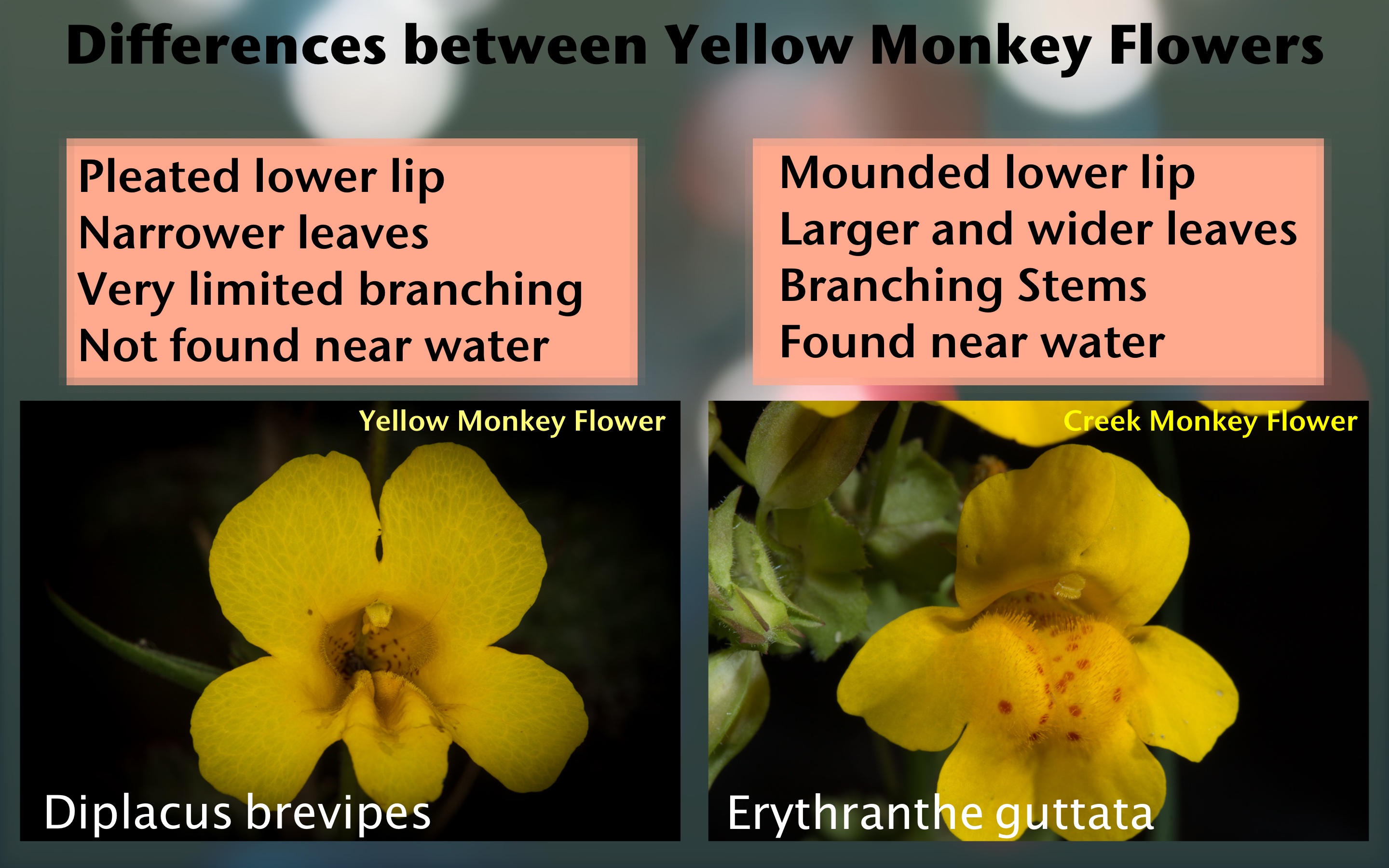Creek Monkey Flower
- Erythranthe guttata
| Common Name(s): | Creek Monkey Flower |
| Scientific Name: | Erythranthe guttata |
| Family: | Phrymaceae (Lopseed) |
| Plant Type: | Annual |
| Size: | up to 30 inches |
| Habitat: | creeks, damp areas |
| Blooms: | March to July |
| Fire Response: | Germinate from Seed |
Creek Monkey Flower Erythranthe guttata is always found growing in damp or wet areas from sea level to 12,000 feet throughout western North America. The plant is highly variable plant, taking many forms - Annual or Perennial, tall or short, hairy or not hairy. Erythranthe guttata is usually not more than 30 inches tall and has disproportionately large long, tubular flowers. The perennial form spreads via rhizomes. The stem may be erect or sprawl on the ground. Roots may develop at leaf nodes in the the latter form. Red dots on a rounded pollinator platform indicate that this plant is pollinated by insects versus hummingbirds. This plant is pollinated by bees in the Bombus species.
Leaves are opposite, round to oval, usually coarsely and irregularly toothed or lobed.
The calyx has five lobes that are much shorter than the flower. Each flower has bilateral symmetry and has two lips. The upper lip usually has two lobes; the lower, three. The lower lip may have one large to many small red to reddish brown spots. The opening to the flower is hairy.The bright yellow flowers are born on a flower cluster with the separate flowers attached by short equal stalks at equal distances along a central stem. The flowers at the base of the central stem develop first, most often with five or more flowers.
Link to Calflora.net - the best source of this fascinating information.
Name Origin: Erythranthe: : from Greek erythros, "red," and anthos, "flower," the only species in this genus when it was first published in 1840 by Édouard Spach being Erythranthe (Mimulus) cardinalis. (ref. genus Erythranthe) guttata/guttatus: from the Latin meaning "a drop-like spot" which describes the red dots on both petals and sepals.
Contributed by George Sherman
Featured Plants in the Phrymaceae (Lopseed) Family:
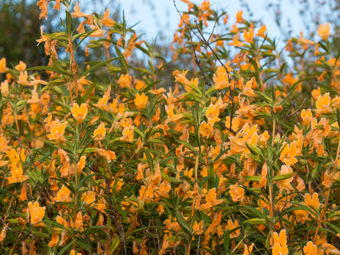
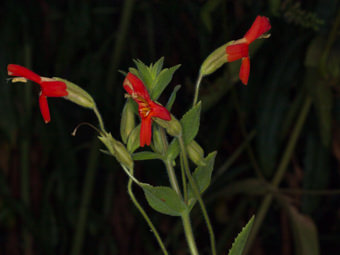
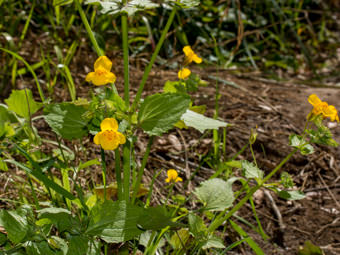
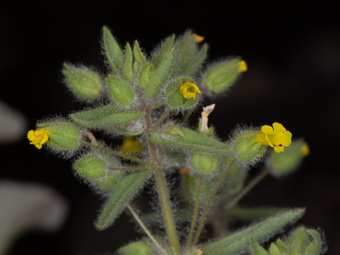
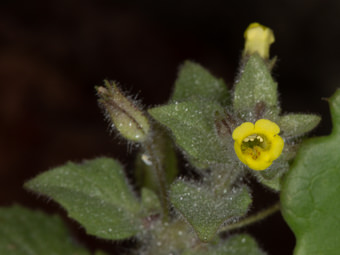
Last modified: August 21 2024 15:18:55.
Number of Images: 11
Image Size Total: 4,233,291
References:
Wildflowers of the Santa Monica Mountains, by Milt McAuleyFlowering Plants: The Santa Monica Mountains, Coastal and Chaparral Regions of Southern California, by Nancy Dale
Chumash Ethnobotany: Plant Knowledge Among the Chumash People, by Jan Timbrook
Leaf Shapes Primer - Botanical Terms for Leaves: - Link

